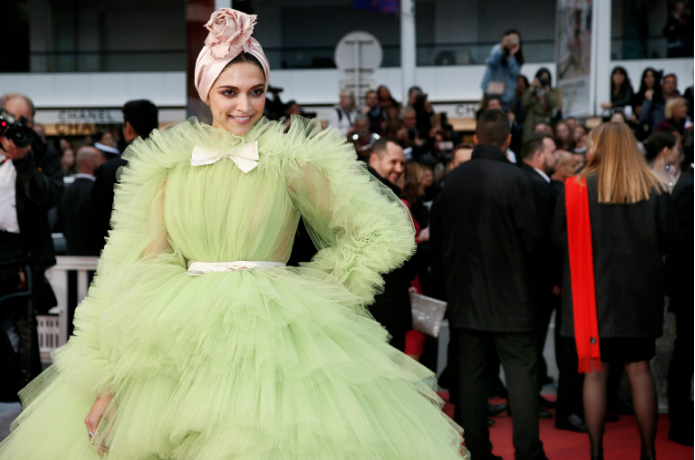
Indian women play a dynamic and evolving role in both Indian society and the broader global culture. Its overview include: a. Cultural Identity and Tradition: Indian women have traditionally been key custodians of cultural practices, rituals, and festivals. Clothing, such as saris, salwar suits, and jewellery like bangles or bindis, symbolize deep-rooted traditions but also inspire global fashion trends. Dances like Bharatanatyam, Kathak, and Odissi not only represent classical Indian culture but have also been performed worldwide, bridging cultures through artistic expression. b. Representation in Global Arts and Media: Cinema: Indian actresses like Priyanka Chopra, Deepika Padukone, and Aishwarya Rai have transcended Bollywood to participate in Hollywood films, bringing elements of Indian culture to global screens. Literature: Writers like Arundhati Roy and Jhumpa Lahiri explore themes of identity, gender, and diaspora, resonating with international audiences. Music and Dance: Global fusion forms are often inspired by Indian classical and folk traditions. For example, Bollywood dance is taught and performed around the world. c. Socio-Political Impact: Indian women such as Indira Gandhi, Kalpana Chawla, and Malala Yousafzai (though she is from Pakistan, her advocacy resonates across South Asia) have had a far-reaching influence on global political and social spheres. Activists like Medha Patkar and Vandana Shiva are recognized internationally for their work on environmental and social justice. d. Fashion and Beauty Industry: Indian textiles like silk and handlooms are celebrated globally. Designers such as Sabyasachi Mukherjee and Ritu Kumar have showcased Indian aesthetics in global fashion shows. Henna art (Mehndi), which has its origins in Indian and South Asian culture, is now a popular practice at weddings and festivals worldwide. e. In Science and Technology: Indian-origin women such as Indira Nooyi (former CEO of PepsiCo) and Gita Gopinath (Deputy Managing Director of the IMF) exemplify success in leadership roles. Kalpana Chawla and Sunita Williams have made significant contributions as astronauts, representing Indian heritage on a global platform. f. Global Influence through Migration and Diaspora: The Indian diaspora, including many women, shapes multicultural identities in countries like the USA, Canada, the UK, and the Middle East. Indian women abroad often maintain cultural practices while contributing to local societies in areas like healthcare, academia, and entrepreneurship. Thus, Indian women symbolize the interplay of tradition and modernity, influencing and being influenced by global culture. Their impact spans diverse fields, reflecting a blend of rootedness in Indian identity and engagement with the wider world.
Indian and global culture
Indian culture is a rich and diverse tapestry of traditions, customs, religions, languages, arts, and philosophies that have evolved over thousands of years. It reflects a deep connection between spirituality, family values, and community life, alongside modern transformations influenced by globalization. a. Core Values and Beliefs: Collectivism: The family and community are prioritized over individual desires. Respect for Elders: Age is associated with wisdom, and elders play a key role in decision-making. Dharma (duty): The concept of duty and righteousness guides behaviour, shaping personal and social conduct. Non-violence (Ahimsa): Peaceful coexistence is emphasized in many philosophical traditions like Jainism and Buddhism. b. Religion and Spirituality: India is the birthplace of major religions such as Hinduism, Buddhism, Jainism, and Sikhism, and also home to significant populations of Muslims and Christians. Religion influences festivals, daily rituals, and dietary practices. Temples, mosques, churches, and gurudwaras play a vital role in community life. Yoga and meditation, deeply rooted in Indian philosophy, are practiced globally for spiritual growth and wellness. c. Family and Social Structure: Joint families are traditionally common, where multiple generations live under one roof, though nuclear families are increasing in urban areas. Marriages are often arranged by families, with emphasis on compatibility and cultural traditions. The caste system, though officially abolished, still influences social interactions and marriage practices in some areas. However, comparing Indian culture with global culture reveals both distinct differences and areas of convergence. This comparison offers insights into how tradition, modernity, values, and practices are expressed across cultures and include: a. Tradition vs. Modernity: Indian culture tends to be deeply rooted in tradition, whereas global culture emphasizes modernity, individualism, and innovation. b. Family vs. Individualism: While Indian culture prioritizes family and collective values, global culture often promotes personal freedom and independence. c. Cultural Exchange: Both cultures influence each other—Indian festivals like Diwali are celebrated abroad, while Western fashion and digital trends are popular in India. d. Adaptability: Indian society is gradually embracing global trends like women’s empowerment and mental health awareness, while maintaining its cultural identity. The interplay between Indian and global cultures creates a dynamic blend of tradition and modernity, offering opportunities for growth but also posing challenges in balancing the two.
Challenges of Indian women
Western culture has brought several positive changes for Indian women, such as education, career opportunities, and greater autonomy. However, these shifts also present challenges, as Indian women navigate the tensions between traditional expectations and modern influences. a. Conflicting Social Expectations: Traditional vs. Modern Roles: Indian women face the dual burden of meeting family expectations (as caregivers) while also pursuing careers or personal ambitions inspired by Western ideals of independence. Work-Life Balance Issues: Juggling professional responsibilities with domestic duties creates pressure, as the idea of shared domestic labour is still evolving in many households. b. Cultural Resistance and Backlash: Generational Conflicts: Younger women embracing modern clothing, dating, or late marriages may experience resistance from older generations rooted in traditional norms. Moral Policing: Concepts like live-in relationships, premarital sex, or nightlife are criticized in some communities, leading to social stigma or even harassment. c. Rising Consumerism and Economic Pressure: Lifestyle Expectations: The adoption of Western lifestyle trends (fashion, travel, dining) adds economic pressure, especially for middle-class women trying to balance cultural values with modern aspirations. d. Changes in Marital and Relationship Norms: Delay in Marriages: Pursuing higher education or careers often leads to later marriages, which can attract social criticism or pressure from families. Shift in Partner Dynamics: Western ideals of equal relationships clash with traditional gender roles, leading to challenges in marital adjustments or expectations of shared responsibilities. e. Mental Health Challenges: Stress and Anxiety: The pressure to excel in both professional and personal domains can result in burnout. The stigma around mental health issues further complicates seeking help. Loneliness and Isolation: As women adopt more independent lifestyles, they may face emotional isolation due to reduced reliance on family networks. f. Erosion of Traditional Support Systems: Decline of Extended Families: As urbanization increases and nuclear families become the norm, women lose access to traditional support systems like family elders for childcare and emotional support. Loss of Cultural Identity: Balancing modern lifestyles with traditional practices becomes challenging, especially as Western individualism emphasizes personal over familial commitments. Thus, while Western culture has empowered Indian women with greater independence and opportunities, it has also created new challenges, particularly in balancing modern aspirations with cultural expectations.

